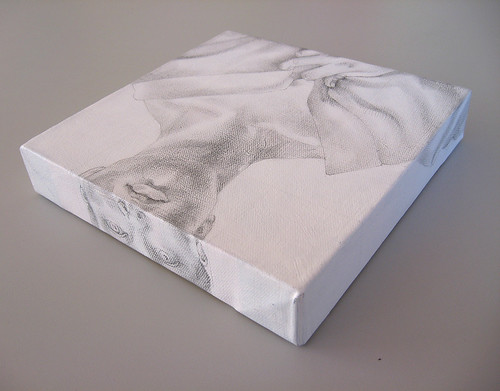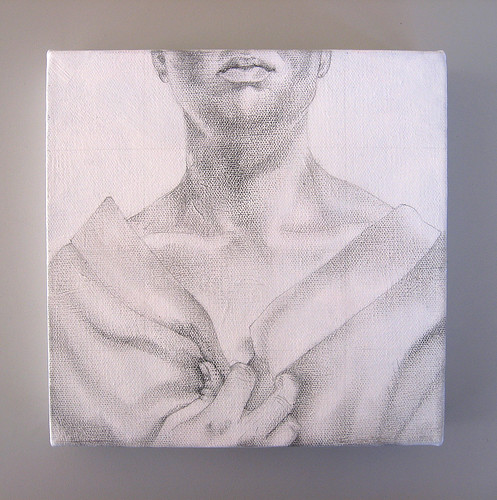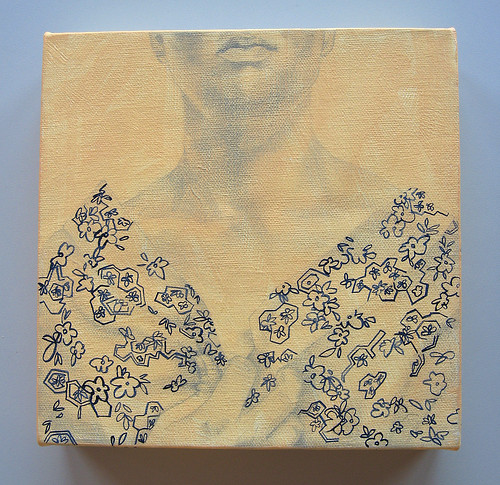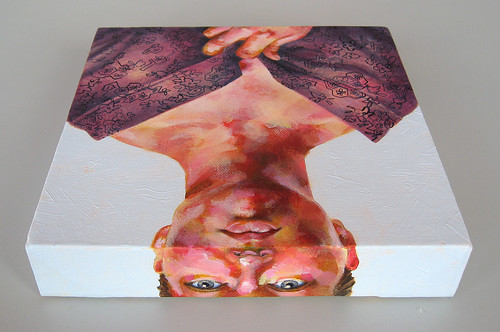
Landlocked: Still Life with Sushi, acrylic on canvas, 8 x 8 inches, 2011 by Sarah Atlee. Some rights reserved.
Composition is about choices
When composing an image, the artists chooses where each element is placed in order to produce certain effects. The desired effect could be motion, tension, calm, strength, quiet, noise, and so on.
Lately I'm revisiting Richard Diebenkorn's Ocean Park paintings and studying his compositions. I'm wild about the way he pushes those divisions of space almost to the edges of the canvas in a conscious step away from the traditional Western pyramid. As my former painting teacher Martin Facey (himself a student of Diebenkorn's) would say, the middle of this painting is full of "nothing," as in no thing.
Painting no thing
In exploring still life painting, I find that composition is queen. A solid composition is complemented, not overshadowed, by color and paint handling. I enjoy playing on the notion that the most important business of a painting happens in the middle.
For Landlocked, above, I wanted to try pushing all the action to the first half of the hour, so to speak. I frequently employ the circle-within-a-square layout, and I like how the oddish placement of the sushi plays against the static underpinnings of the image.
My original photos of these leftovers included a teacup with soy sauce in it, a very dark element dominating the upper left quadrant of the composition. I decided against including it in the painting, choosing instead to fill that half of the plate with no thing. I also changed the color of the plate from green to a more neutral grey to turn its personality down a few notches, letting the sushi pop (better than putting it in the frying pan, no?).
Landlocked was created for the 2012 Small Works exhibit at JRB Art Gallery at the Elms.
 Garage 283, acrylic on canvas, 36 x 36 inches, 2010 by Sarah Atlee.
Garage 283, acrylic on canvas, 36 x 36 inches, 2010 by Sarah Atlee. Photo collage for Garage 283, 2010 by Sarah Atlee
Photo collage for Garage 283, 2010 by Sarah Atlee Garage 283, detail (landscape view), 2010 by Sarah Atlee
Garage 283, detail (landscape view), 2010 by Sarah Atlee
 Self Portrait: Three Lucky Pennies, acrylic on canvas, 8 x 8 x 1.5 inches, 2010
Self Portrait: Three Lucky Pennies, acrylic on canvas, 8 x 8 x 1.5 inches, 2010







